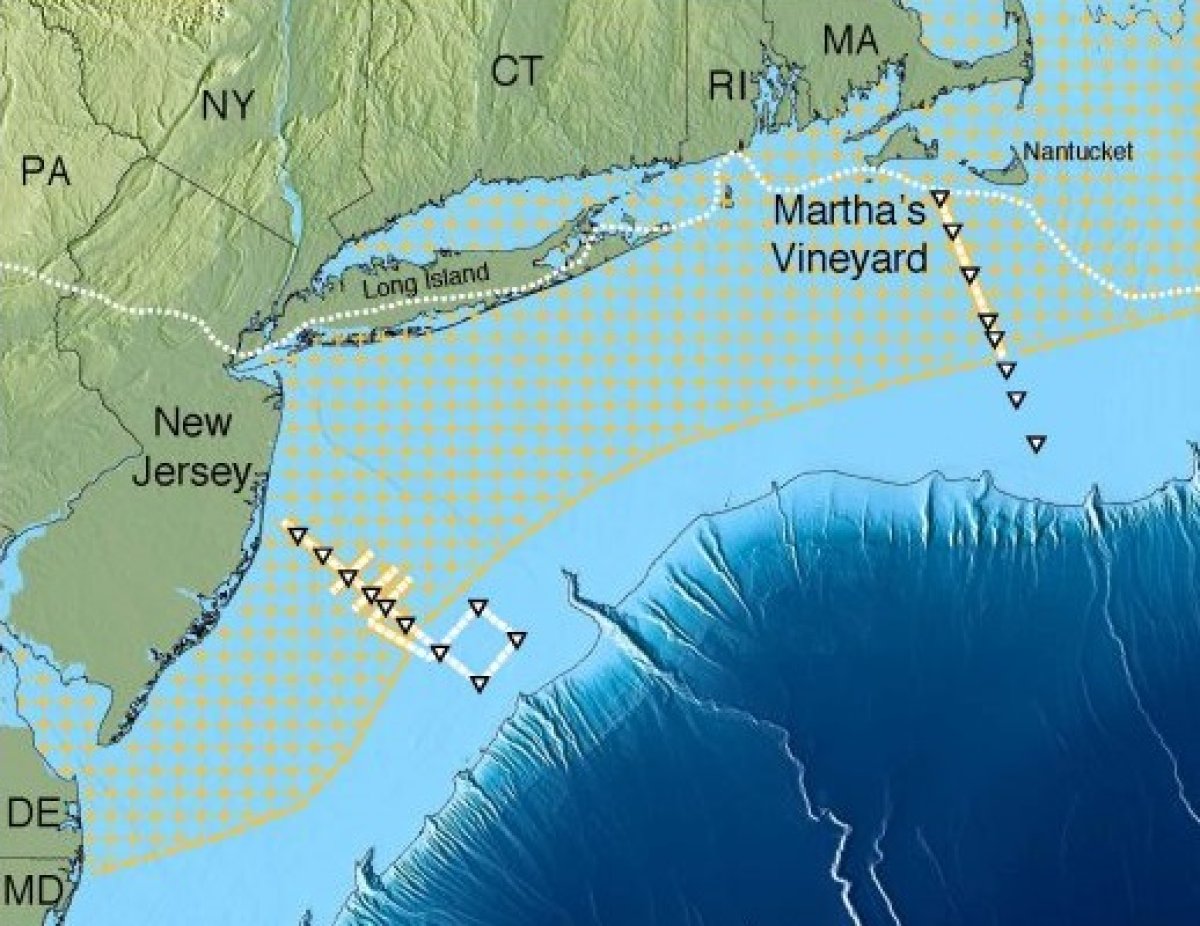Scientists have discovered a huge reservoir of potentially fresh water hidden beneath the ocean off the east coast of the U.S.
The formation is an aquifer—an underground layer of permeable rock that can contain groundwater. A survey of the region showed it stretches 50 miles out to sea and extends from at least Massachusetts to New Jersey—and possibly as far as Rhode Island, Connecticut and New York.
If the scientists' estimates are correct, the volume of water locked up could be 670 cubic miles—almost as much water as can be found in Lake Huron (850 cubic miles). It would also make the aquifer the biggest formation of its kind.
The discovery is important as researchers believe similar aquifers may exist across the globe—potentially providing a source of fresh water in regions where access to this resource is becoming more and more limited.
Access to fresh water is a huge concern for billions of people across the planet. According to the World Health Organization, 785 million people do not have access to even a basic drinking water service, while by 2025, half of the global population will be living in "water-stressed areas."
A team of researchers, led by Chloe Gustafson from Columbia University's Lamont-Doherty Earth Observatory, were building on previous surveys that had shown pockets of fresh water exist in the sediments beneath the salty ocean.
Evidence of an aquifer first emerged in the 1970s when companies drilling for oil would occasionally hit a pocket of freshwater instead. However, it was unclear whether these were isolated regions, or if they represent pieces of a larger structure. In 2015, using technology that had previously been used by oil companies to search for oil, researchers started studying the coast off New Jersey and Massachusetts, where pockets of fresh water sediments had previously been identified. Their findings have now been published in the journal Scientific Reports.

The team used receivers placed on the seafloor to measure the electromagnetic fields beneath. They also emitted artificial electromagnetic pulses and recorded the reactions. Saltwater is a better conductor of electromagnetic waves than fresh water—so a band of low conductance indicated the presence of fresh water.
"We knew there was fresh water down there in isolated places, but we did not know the extent or geometry," Gustafson said in a statement.
Findings showed that the freshwater pockets were pretty much continuous. They started at the shore and extended out to up to 75 miles. The deposits were found to start at a depth of around 600 feet and stretched down to about 1,200 feet.
The team say their findings could help improve models of the history of the continental shelves, providing an insight into the cycles that drive them. It is thought the water could have gotten there through one of two ways—that it was locked up there at the end of the last ice age, or that it is currently being fed by subterranean runoff from the mainland. The team believes the latter may be more likely, as measurements of the water's salinity shows the further out it is, the saltier it gets.
The discovery also indicates that other, major reservoirs of fresh water could be lurking beneath the ocean—and that these aquifers could provide a vital resource for people living in regions of water scarcity. "It could turn out to be an important resource in other parts of the world," Gustafson said.

Uncommon Knowledge
Newsweek is committed to challenging conventional wisdom and finding connections in the search for common ground.
Newsweek is committed to challenging conventional wisdom and finding connections in the search for common ground.
About the writer
Hannah Osborne is Nesweek's Science Editor, based in London, UK. Hannah joined Newsweek in 2017 from IBTimes UK. She is ... Read more
To read how Newsweek uses AI as a newsroom tool, Click here.








